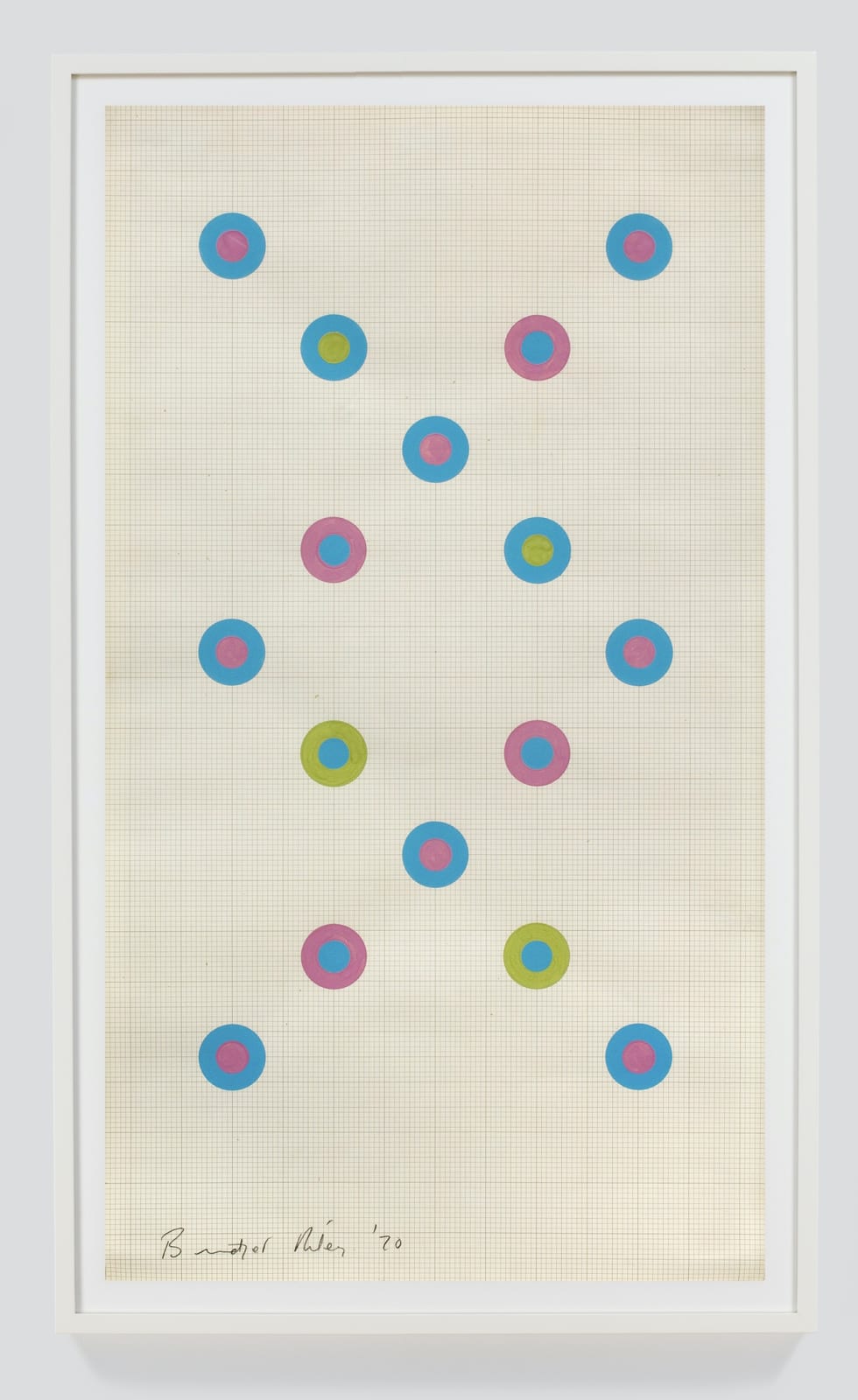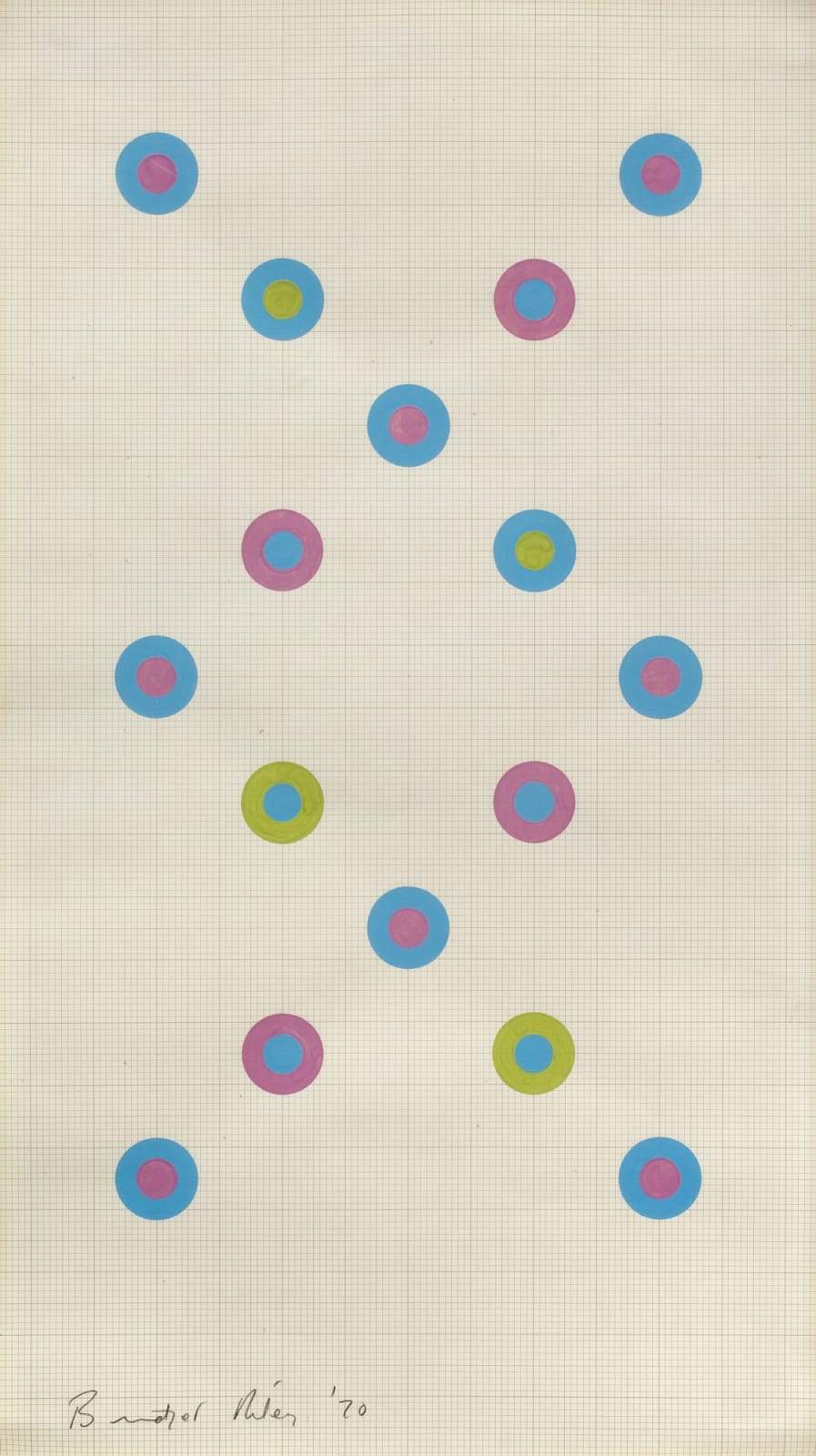

Bridget Riley (b. 1931)
23 ¼ x 12 ¾ in
Provenance
Roman Gallery, London
Private Collection
Sotherby's, London (October 22, 1986; lot 365)
Private Collection
Private Collection UK
Fortescue & Oldfield
Literature
Since 1961, Bridget Riley (b. 1931) has focused exclusively on seemingly simple geometric forms, such as lines, circles, curves, and squares, arrayed across a surface - whether a canvas, a wall, or paper - according to an internal logic. The resulting compositions actively engage the viewer, at times triggering sensations of vibration and movement. This sense of dynamism was explored to great effect in the artist's earliest black-and-white paintings, which established the basis of her enduring formal vocabulary. In 1967, Riley introduced color into her work, thus expanding the perceptual and optical possibilities of her composition.
The present work belong's to a group of "closed disc" studies that Riley made in 1970 that comprise solid discs as well as concentric rings of contrasting colors arrayed across the work's surface in varying configurations. Over the course of her more than fifty-year career, Riley has frequently returned to easier ideas and even to specific works in order to indentify directions that a form could take, with the discs the form returned to in her monumental wall painting, Messenger, at the National Gallery in London.
- Austin Desmond, London

